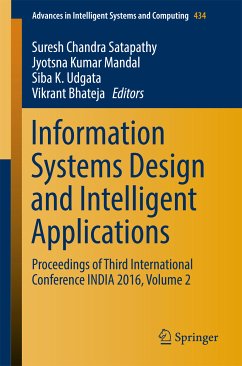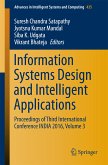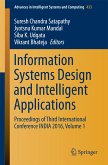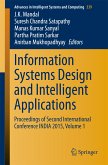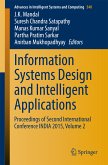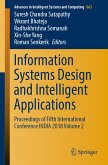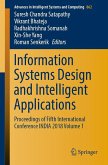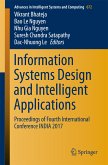Information Systems Design and Intelligent Applications (eBook, PDF)
Proceedings of Third International Conference INDIA 2016, Volume 2
Redaktion: Satapathy, Suresh Chandra; Bhateja, Vikrant; Udgata, Siba K.; Mandal, Jyotsna Kumar


Alle Infos zum eBook verschenken

Information Systems Design and Intelligent Applications (eBook, PDF)
Proceedings of Third International Conference INDIA 2016, Volume 2
Redaktion: Satapathy, Suresh Chandra; Bhateja, Vikrant; Udgata, Siba K.; Mandal, Jyotsna Kumar
- Format: PDF
- Merkliste
- Auf die Merkliste
- Bewerten Bewerten
- Teilen
- Produkt teilen
- Produkterinnerung
- Produkterinnerung

Hier können Sie sich einloggen

Bitte loggen Sie sich zunächst in Ihr Kundenkonto ein oder registrieren Sie sich bei bücher.de, um das eBook-Abo tolino select nutzen zu können.
The third international conference on INformation Systems Design and Intelligent Applications (INDIA - 2016) held in Visakhapatnam, India during January 8-9, 2016. The book covers all aspects of information system design, computer science and technology, general sciences, and educational research. Upon a double blind review process, a number of high quality papers are selected and collected in the book, which is composed of three different volumes, and covers a variety of topics, including natural language processing, artificial intelligence, security and privacy, communications, wireless and…mehr
- Geräte: PC
- ohne Kopierschutz
- eBook Hilfe
- Größe: 23.57MB
![Information Systems Design and Intelligent Applications (eBook, PDF) Information Systems Design and Intelligent Applications (eBook, PDF)]() Information Systems Design and Intelligent Applications (eBook, PDF)161,95 €
Information Systems Design and Intelligent Applications (eBook, PDF)161,95 €![Information Systems Design and Intelligent Applications (eBook, PDF) Information Systems Design and Intelligent Applications (eBook, PDF)]() Information Systems Design and Intelligent Applications (eBook, PDF)161,95 €
Information Systems Design and Intelligent Applications (eBook, PDF)161,95 €![Information Systems Design and Intelligent Applications (eBook, PDF) Information Systems Design and Intelligent Applications (eBook, PDF)]() Information Systems Design and Intelligent Applications (eBook, PDF)258,95 €
Information Systems Design and Intelligent Applications (eBook, PDF)258,95 €![Information Systems Design and Intelligent Applications (eBook, PDF) Information Systems Design and Intelligent Applications (eBook, PDF)]() Information Systems Design and Intelligent Applications (eBook, PDF)161,95 €
Information Systems Design and Intelligent Applications (eBook, PDF)161,95 €![Information Systems Design and Intelligent Applications (eBook, PDF) Information Systems Design and Intelligent Applications (eBook, PDF)]() Information Systems Design and Intelligent Applications (eBook, PDF)113,95 €
Information Systems Design and Intelligent Applications (eBook, PDF)113,95 €![Information Systems Design and Intelligent Applications (eBook, PDF) Information Systems Design and Intelligent Applications (eBook, PDF)]() Information Systems Design and Intelligent Applications (eBook, PDF)113,95 €
Information Systems Design and Intelligent Applications (eBook, PDF)113,95 €![Information Systems Design and Intelligent Applications (eBook, PDF) Information Systems Design and Intelligent Applications (eBook, PDF)]() Information Systems Design and Intelligent Applications (eBook, PDF)233,95 €
Information Systems Design and Intelligent Applications (eBook, PDF)233,95 €-
-
-
Dieser Download kann aus rechtlichen Gründen nur mit Rechnungsadresse in A, B, BG, CY, CZ, D, DK, EW, E, FIN, F, GR, HR, H, IRL, I, LT, L, LR, M, NL, PL, P, R, S, SLO, SK ausgeliefert werden.
- Produktdetails
- Verlag: Springer India
- Seitenzahl: 767
- Erscheinungstermin: 2. Februar 2016
- Englisch
- ISBN-13: 9788132227526
- Artikelnr.: 44617828
- Verlag: Springer India
- Seitenzahl: 767
- Erscheinungstermin: 2. Februar 2016
- Englisch
- ISBN-13: 9788132227526
- Artikelnr.: 44617828
- Herstellerkennzeichnung Die Herstellerinformationen sind derzeit nicht verfügbar.
